Iniesta stars as Barcelona’s tactics shut out Real Madrid in Messi’s return

Lionel Messi returned from injury on Saturday, but Barcelona hardly needed him. He made his influence obvious right away, creating the final goal of a 4–0 win over Real Madrid, but the victory was already secure before he stepped on the field.
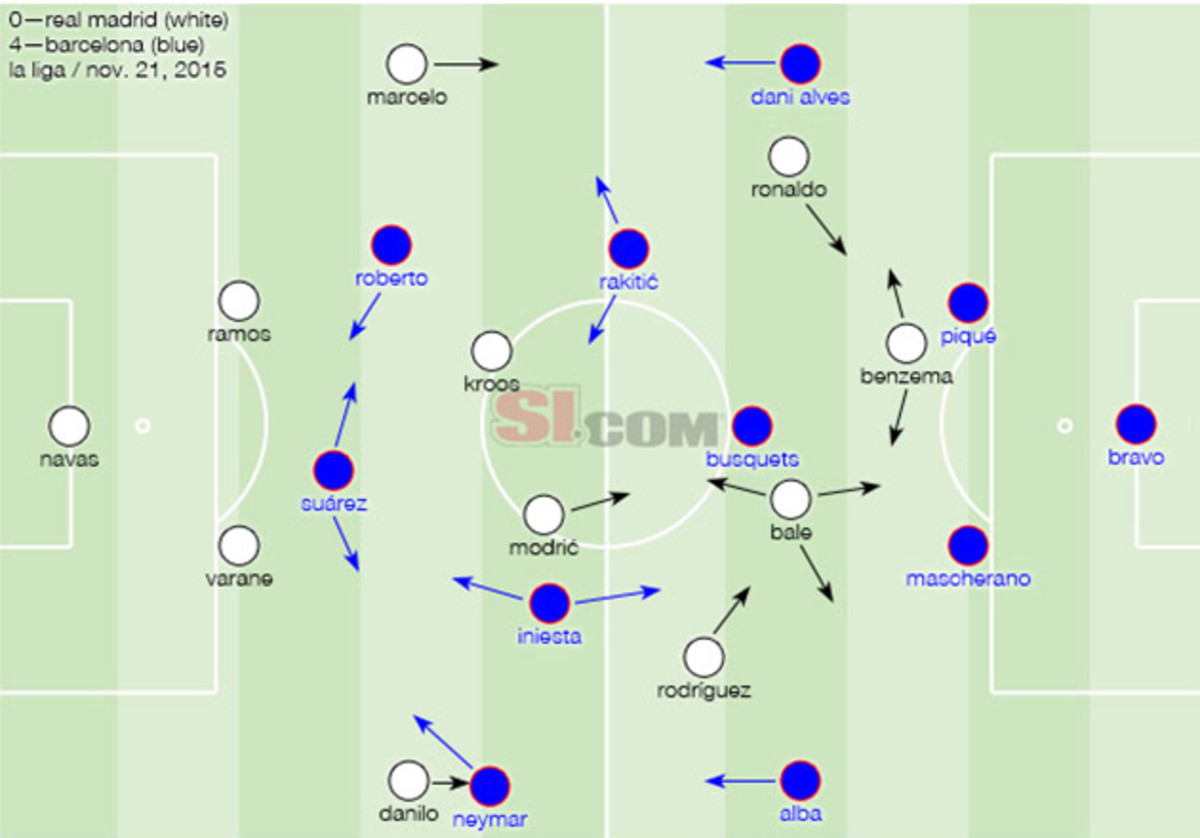
Barça scored after just 10 minutes, Luis Suárez putting away the first of two goals that bookended a blaugrana-dominated match. He and Neymar, along with a vintage performance from 31-year-old creative midfielder Andrés Iniesta, carried the team in Messi’s absence.
Barcelona began the match in its typical 4-3-3 alignment, with Sergio Busquets anchoring the midfield and Sergi Roberto playing on the right. Neymar pulled wider on the opposite side and also dropped deeper to give the team a 4-4-2 look on defense, while Iniesta and Ivan Rakitić patrolled the half-space areas on the extended inner borders of the penalty areas.
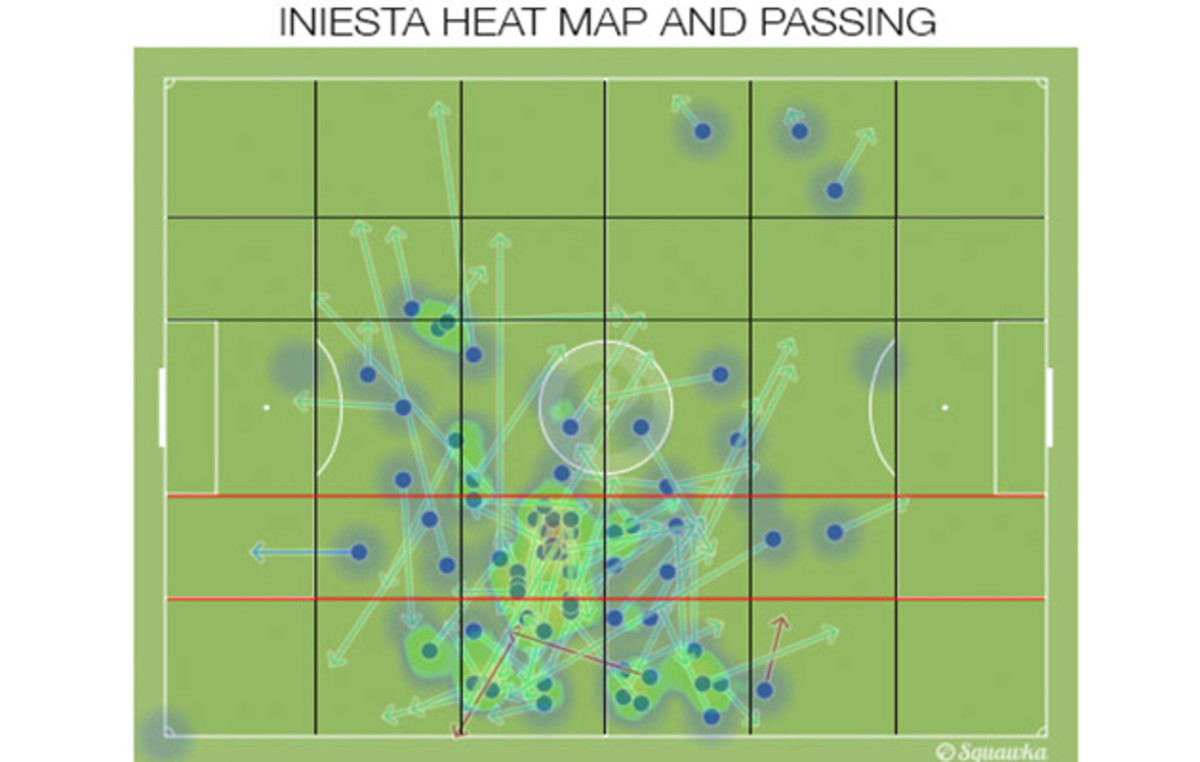
Iniesta in particular influenced play up and down the field, completing 96% of his passes, creating the second goal by driving at Real’s back line before scoring the third. His masterful display encompassed all aspects—on the dribble, in passing and even defensively.
• Suarez opens scoring |Neymar pushes lead to 2–0 |Iniesta makes it 3–0
It’s astounding a player of Iniesta’s age could play a box-to-box role for 76 minutes before giving way to Munir El Haddadi, but his game intelligence made it possible even more than his still-impeccable technique. Defensively, he read plays well enough to be in position before he needed to be, and play revolved around his distribution in attack as he occupied a central area largely devoid of opponents.
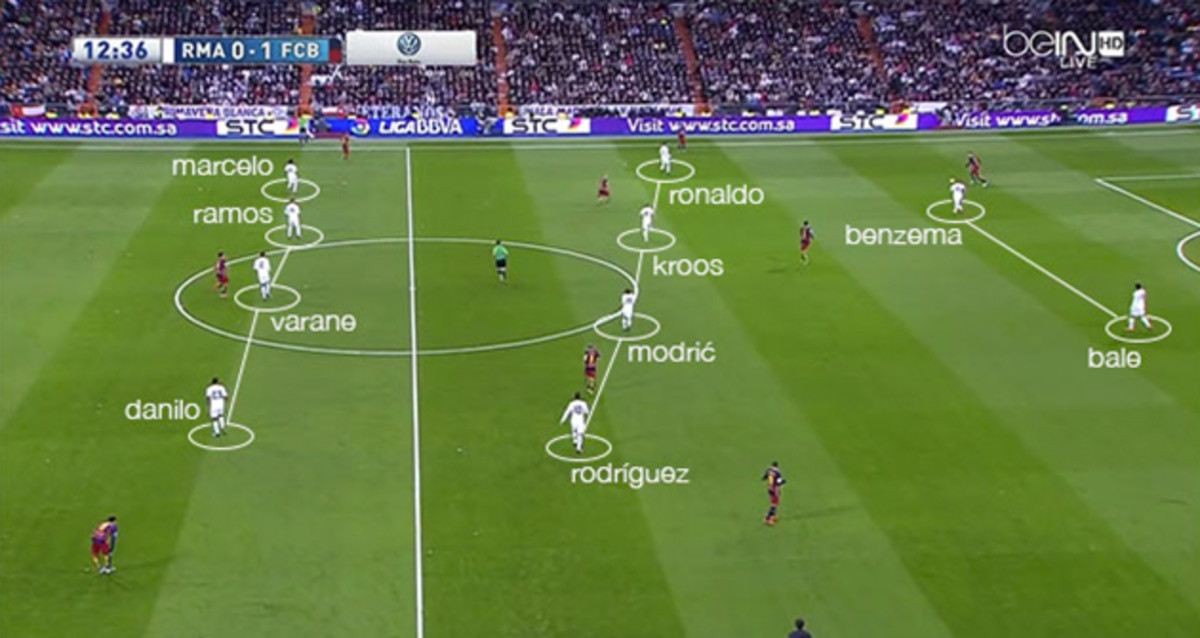
Rafa Benítez lined his team up in a 4-4-2 system that saw Toni Kroos and Luka Modrić left to battle the Barça midfielders nearly alone. Defensively, Madrid comprised three flat lines, with Cristiano Ronaldo and James Rodríguez providing support to Karim Benzema and Gareth Bale in attack.
In the attacking third of the field, those four attackers rotated across the top line. Rodríguez floated between the midfield and forward lines, as did Bale, with Benzema filling empty spaces and all players balancing each other’s movements.
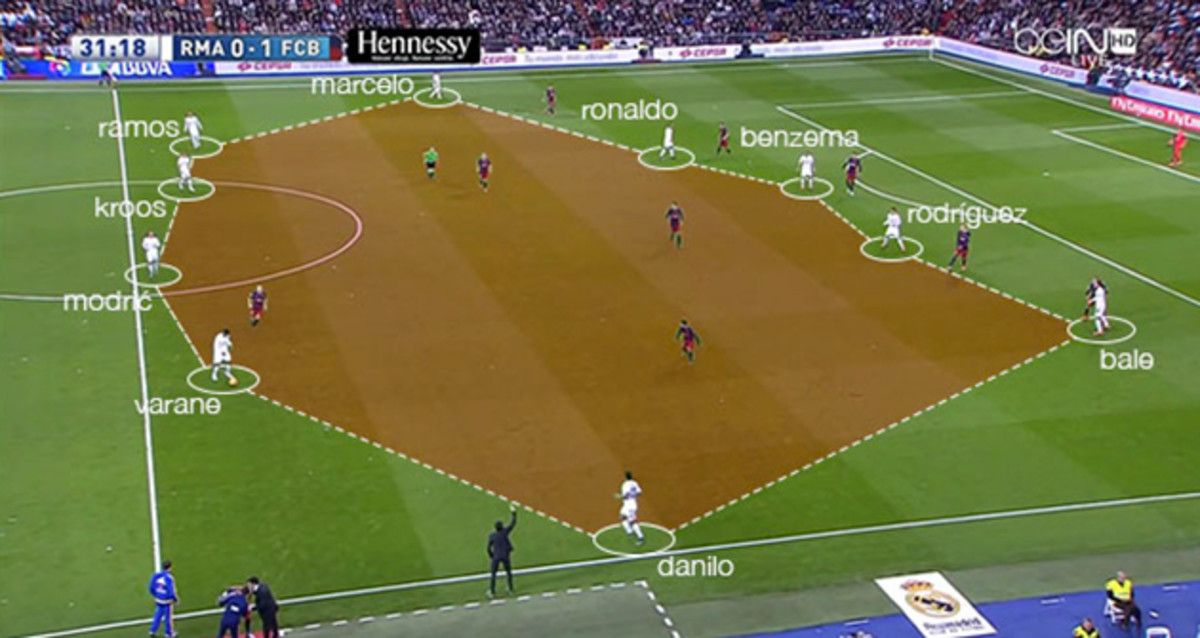
The problem was, with Modrić and Kroos left to cover the back line, nobody differentiated himself with creative runs off the ball in attack. All four of the team’s superstars remained no wider than the penalty area, looking for balls to latch onto in the penalty area or to chase over the top. By contrast, Barça’s attackers remained committed to the club identity of circulating possession and exploiting spaces collectively as they opened, although their positional play was often imperfect as well.
Real’s best chances came from pressing high up the field as Barcelona attempted to build out of the back. The rotational press—creating one-on-one situations from a zonal framework—employed by the top four caused problems for goalkeeper Claudio Bravo and his compatriots, who nonetheless remained committed to the tactic, even under intense pressure.
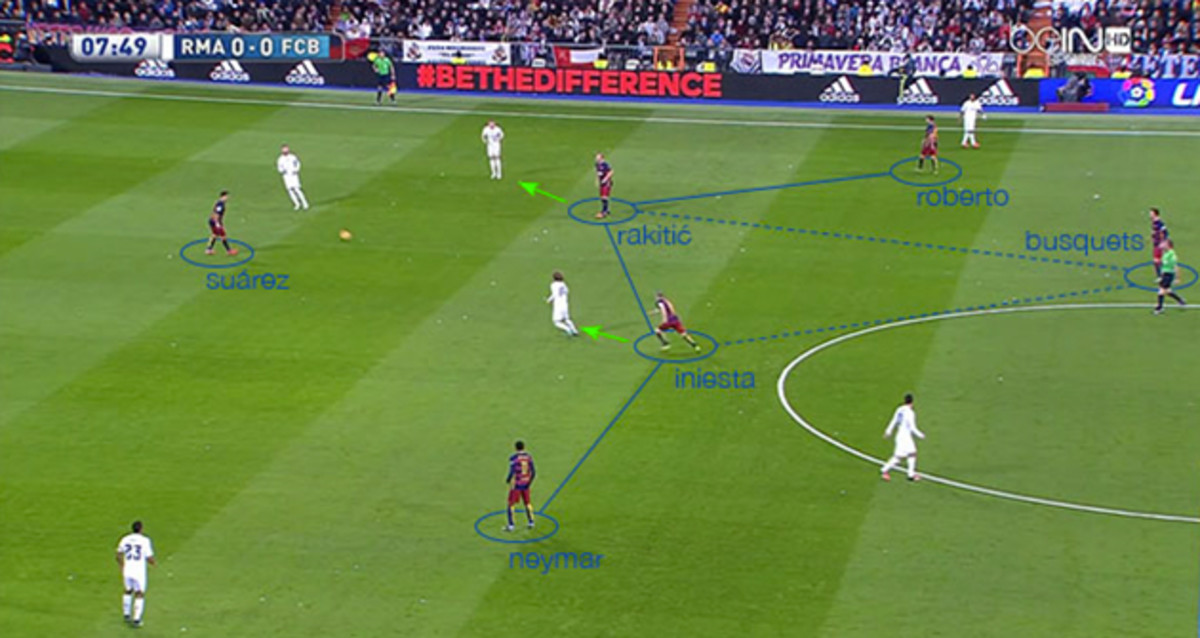
Once Barça bypassed Real’s forward and midfield lines of pressure, possession became easier to find. In the middle and low blocks, Modrić and Kroos collapsed on top of the back line, allowing Rakitić and Iniesta to step higher than they normally would to pressure in the event of a loss of possession.
This again accentuated the central gap between defenders and attackers for Madrid. Unable to build out of the back sustainably, Madrid launched long balls forward that Barcelona defended comfortably most of the time.
Goalkeeper Keylor Navas only attempted four short passes and 11 long balls out of the back, compared to Bravo’s 17 short attempts and nine long throughout the match. Among the goalkeeper and center backs, Madrid launched 20 long balls from its defensive third, while Barça hit 12.
Real looked comfortable in its high-block defending due to its high-pressure system, but the man-oriented pressing let the Galácticos down once they reached the low block. With its patient ball circulation, Barcelona continually opened gaps between the lines of white-clad players, resulting in three of the four goals.
The first came after a 24-pass sequence that Opta announced as the longest sequence of passes in the league this season so far. Iniesta’s goal came after he broke two lines with a single pass and received Neymar’s return backheel, slamming it in from long distance. Finally, Messi went on one of his signature diagonal dribbles to open space before slipping the ball to a teammate in a better position.
Barcelona’s goal with its incessant short passes and Messi’s dribbles is to exploit any gaps between opposition lines of defense, which were easy to find against Madrid on Saturday. As former Barça midfielder and manager Pep Guardiola says, it’s moving the ball to displace opponents—tactical moves as if playing on a giant green chess board.
Madrid’s disconnection between the back two lines in its mid-to-low-block defensive shape, with defenders stepping only after their partners were beaten, showed a lack of team cohesion and understanding. The gaps didn’t look like much at times, but at the high pace and level of play in Clásico matches, it doesn’t take much separation to make the difference.
It’s surprising that a team managed by Benítez would have as many exploitable defensive issues as this Real team does, but president Florentino Pérez’s Galáctico philosophy doesn’t guarantee team chemistry the way Barcelona’s method ingrained from La Masia does.
Marcelo’s foray down the left flank in the 47th minute personified the difference between the teams. Unlike Neymar in first-half stoppage time, Marcelo only had eyes for goal, dribbling until he took a shot from a poor angle into the wrong side of the near-post netting. On the other side of the break, Neymar drove toward the endline and cut back a cross toward Suárez that would have resulted in the third goal had Marcelo not intervened on the goal line.
• BERLIN: EPL Notes: Liverpool thrashes Man City; Leicestor takes top spot
While the hand-wringing in Madrid is well underway over whether Benítez is the right man to lead the team, Barcelona will continue to be driven by its unique process rather than one individual cog. The man in charge of the first team still has to be the right one—Tata Martino’s ’13-14 season showed as much—but it matters a little less with the infrastructure at place in Barcelona.
Even with the academy sanctions and transfer ban levied by FIFA in recent years, Barça continues to produce players and teams of true footballing substance. As Johan Cruyff once put it, “You need both quality and results. Results without quality is boring; quality without results is meaningless.”
Certainly, Barcelona’s performance and winning result on Saturday were anything but boring.
